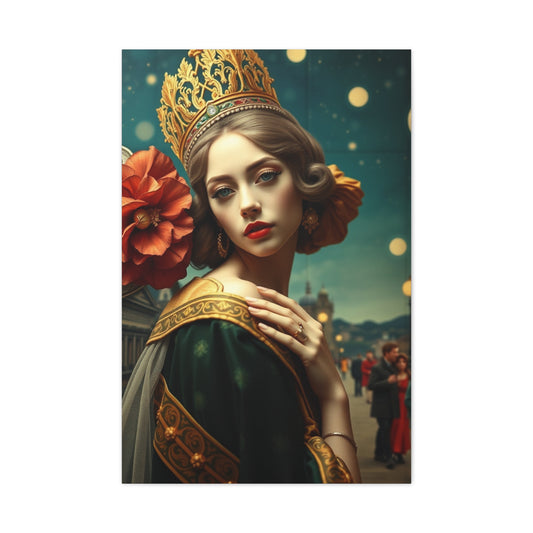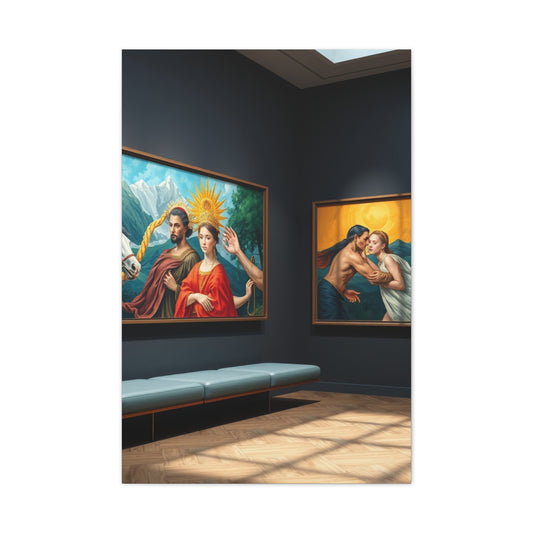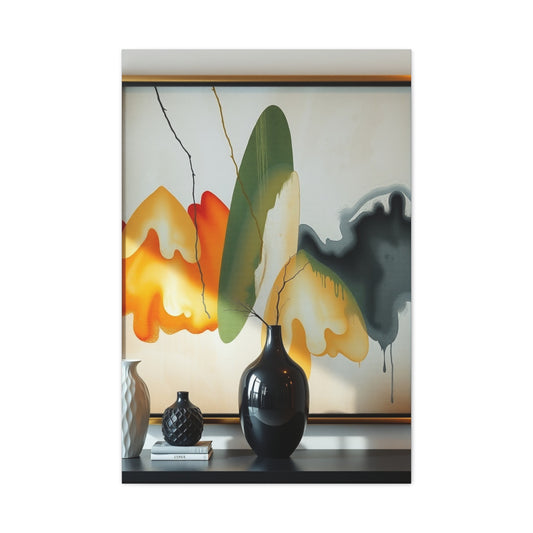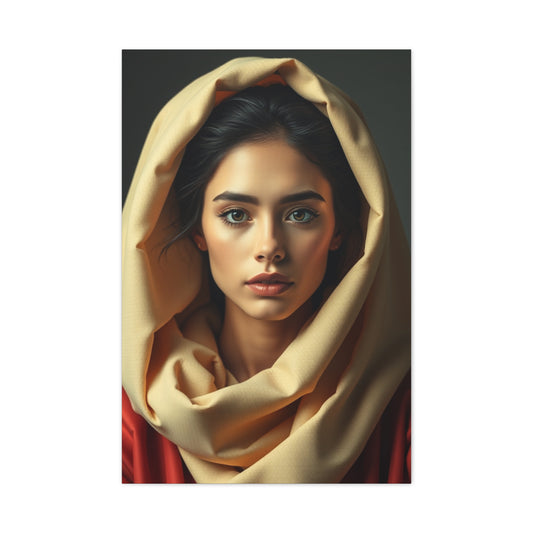Your basement is often one of the most underutilized areas in your home. However, with a little creativity and a strategic touch, it can be transformed into a beautiful and functional space. Whether you envision it as a cozy retreat, a home theater, or a stylish lounge, the right decor can turn your basement into a true extension of your home. One of the easiest and most impactful ways to revitalize your basement is by incorporating vibrant and dynamic wall art. Artwork has the unique ability to transform the entire ambiance of a room, and with the perfect pieces, you can create a basement that is both chic and welcoming. Here’s your ultimate guide to refreshing your basement using stunning wall art.
Why Your Basement Deserves More Than Just Storage
While basements are often relegated to storage or laundry rooms, this part of your home has incredible potential. With the right approach, you can reimagine your basement as a functional and stylish space that adds value to your living environment. Wall art is one of the most transformative tools at your disposal. Whether it’s bold, large-scale pieces or subtle, minimalist works, art can create a visual focal point and anchor the design of the entire space. The first step in designing your basement with wall art is to embrace the possibilities this often-overlooked area offers.
Selecting the Right Wall Art for Your Basement
When it comes to choosing artwork for your basement, it’s crucial to understand the layout and dimensions of the space. A large, open basement can accommodate bigger pieces, while smaller areas might benefit from more focused, personal artwork. The art you choose should complement the existing features of your basement, such as exposed brick, concrete floors, or wooden beams, all of which provide an industrial backdrop that can be softened or accented with the right artwork.
If your basement is dark or has limited natural light, opt for artwork that incorporates bright, energetic colors to lighten and uplift the atmosphere. Vibrant paintings, abstract art, or even nature-inspired prints can help brighten up the space. On the other hand, if your basement has a more relaxed, muted ambiance, you can go for minimalist or monochrome pieces that contribute to a calm and serene environment.
Popular Art Styles for Basements
Contemporary Abstract Art: For a basement that feels modern and chic, contemporary abstract art is an excellent choice. These pieces often feature bold lines, striking colors, and unique patterns that bring a sense of dynamism to the space. Abstract art allows for a lot of flexibility in terms of color and theme, so you can choose pieces that reflect your personal style and the mood you want to create in the room.
Nature-Inspired Art: If your basement lacks windows or natural light, incorporating nature-inspired art can bring the outdoors inside. Think landscape paintings, botanical prints, or coastal photography. These types of art can create a sense of tranquility and freshness, making your basement feel more open and airy.
Vintage and Retro Prints: For basements with a more nostalgic or eclectic vibe, vintage or retro prints can add character and charm. Whether it’s old movie posters, classic advertisements, or mid-century modern art, these pieces can make your basement feel warm and inviting while adding personality to the space.
Minimalist Art: If you prefer a clean and modern look, minimalist art can help create a sense of order and simplicity. With a focus on geometric shapes, subtle colors, and open spaces, minimalist art brings a sense of calm to any room. It’s particularly effective in basements that already feature industrial elements, as it contrasts nicely with the rawness of exposed pipes or brick walls.
How to Arrange Your Wall Art Effectively
Once you've chosen your artwork, it's essential to hang it properly to make the most of the space. The way you arrange your art can significantly impact the flow and visual appeal of the room. Here are a few expert tips to help you create a gallery-worthy display:
-
Eye-Level Placement: The key to hanging artwork is to ensure it’s at eye level. This helps guests appreciate the art without straining their necks. For larger pieces, aim to center them on the wall, while smaller pieces can be grouped together to form a cohesive display.
-
Symmetry vs. Asymmetry: For a more formal look, consider arranging your artwork symmetrically. This is perfect for more traditional or formal basements. If you're aiming for a modern or eclectic feel, an asymmetrical arrangement can be more visually engaging and dynamic.
-
Spacing: When hanging multiple pieces, ensure there’s enough space between them. Too little space can create a cluttered effect, while too much space may make the art look disjointed. A general rule of thumb is to leave about 2-4 inches between each piece for a balanced, cohesive look.
The Power of Large-Scale Art
For basements with large, open walls, large-scale art pieces can make a significant impact. A single, large piece can dominate a wall and become the focal point of the room, while smaller pieces might get lost in a large space. If you opt for large art, be sure to choose pieces that reflect the scale of the room to avoid overwhelming the space.
For example, a bold, multi-panel abstract painting can fill an expansive wall, drawing the eye and establishing a strong visual presence. Alternatively, a massive landscape or a panoramic photograph can add drama and intrigue to the basement’s overall aesthetic.
Color Schemes for Basement Art
The color scheme of your wall art is also an essential consideration when designing your basement. While bold, bright colors can be uplifting, neutrals and muted tones can contribute to a more relaxed and calm atmosphere. If your basement has darker elements like dark wood or exposed beams, you can balance these tones with art that introduces lighter shades or reflective surfaces.
One color trend that’s gaining traction for basements is the combination of neutral tones with vibrant accent colors. Shades of mustard yellow, emerald green, or deep blue can be paired with earthy tones like beige, gray, or brown to create a warm and inviting space. This approach brings warmth to the otherwise cooler atmosphere of many basements.
|
Related Catagories: |
Layering Textures and Complementary Decor
Another way to elevate your basement’s design is by layering textures. Combine wall art with other elements like plush rugs, throws, and soft furnishings to create a cohesive, inviting atmosphere. Textured wall hangings, such as woven tapestries or fabric prints, can also bring a unique dimension to the room, adding depth and interest.
Don't forget to choose furniture and accessories that complement your artwork. If you've chosen contemporary art, sleek, modern furniture will help maintain the minimalist aesthetic. Conversely, if your basement features vintage-style art, you can complement it with retro-inspired furniture and lighting fixtures.
Making Your Basement a Functional, Stylish Space
Incorporating wall art into your basement is an easy and affordable way to enhance the space. Whether you go for large statement pieces, minimalist prints, or vibrant abstract works, wall art can breathe new life into your basement. The right artwork will not only add personality and style to the space but also create an inviting, functional area that complements the rest of your home. By following these simple tips and strategies, you can turn your basement into a chic, stylish retreat that’s both welcoming and inspiring.
Transforming Your Basement Into a Stylish and Functional Living Space
When it comes to home renovation, we often focus on the main living areas like the kitchen, living room, or bedrooms. However, one area that frequently gets overlooked is the basement. Typically relegated to storage, laundry rooms, or utility spaces, the basement has a lot of untapped potential. With a little creativity and the right design choices, you can transform your basement into a multifunctional, stylish space that adds value and versatility to your home.
Reimagining the basement isn’t just about adding functional furniture or updating outdated fixtures—it’s about creating an atmosphere that suits your lifestyle. Whether you envision the space as a cozy retreat for relaxation, an entertainment hub for friends and family, or a dedicated home office, the right design elements can completely change the look and feel of the basement. One of the easiest and most impactful ways to elevate this often underappreciated space is through the addition of wall art. Wall art can breathe life into any room, especially one like the basement, which typically has a darker, more industrial feel. With the right pieces, you can add color, texture, and character, transforming the basement into an inviting and dynamic area that’s both functional and beautiful.
Why Wall Art is a Game-Changer for Your Basement
Basements often feature darker tones due to their location beneath ground level, resulting in less natural light. This can lead to an atmosphere that feels cold or gloomy. One effective way to combat this is by incorporating wall art that injects energy and vibrancy into the space. Colorful, bold pieces of art serve as focal points, drawing attention away from the basement’s darker features and highlighting the potential of the space.
Choosing the right wall art can also help balance the industrial and utilitarian aspects often found in basements. Metal beams, concrete walls, and exposed pipes can lend a raw, urban charm to the room, but without the right décor, they can make the space feel unfinished or uninviting. By carefully selecting wall art, you can either complement or contrast these features to create a more polished and welcoming environment. Whether it’s a large statement piece or a curated gallery wall, wall art adds an emotional and aesthetic layer to your basement, allowing you to express your personal style while also making the room feel like an extension of your living area.
Choosing the Right Wall Art for Your Basement Space
The key to selecting the best wall art for your basement is understanding the mood you want to create and the function of the room. For example, if your basement is intended to be a home theater or entertainment area, consider large, bold art pieces that create a sense of drama and excitement. Large, abstract paintings with vibrant colors or modern graphic prints can set the tone for an immersive viewing experience. If the basement is to serve as a home office or study, you might opt for calming pieces, such as serene landscapes or minimalist art, to create a focused and peaceful environment.
In basements with more natural light or windows, you have more freedom to incorporate brighter, more vivid pieces. However, for basements that lack natural light, consider selecting wall art that brings warmth and vibrancy to the room. Works featuring rich, warm tones like oranges, reds, and yellows can help brighten up the space, while still complementing the overall décor.
Another important consideration is the style of art. Basements tend to have a more industrial feel, which can be complemented by pieces that feature raw, urban elements, such as street art, black-and-white photography, or architectural prints. For a more contemporary or modern aesthetic, geometric shapes or abstract art can add structure and balance to the room, making it feel more cohesive. On the other hand, if you’re aiming for a more traditional or vintage look, framed botanical prints, classic paintings, or old-world maps can provide a sense of nostalgia and timelessness to your basement.
Mixing and Matching: Creating a Gallery Wall
One of the most popular and effective ways to incorporate wall art into your basement is by creating a gallery wall. A well-curated gallery wall can transform an entire space by adding visual interest, creating a focal point, and showcasing a variety of artistic expressions. A gallery wall allows you to mix different styles, sizes, and mediums of artwork, adding complexity and depth to the room.
When designing a gallery wall, begin by choosing a unifying theme or color palette. You could center the display around a particular style of art, such as contemporary photography or vintage prints, or you could simply focus on using complementary colors. A cohesive theme helps tie the pieces together and creates a balanced, organized look.
Additionally, varying the frame sizes and styles adds visual interest and dimension to the display. For instance, mixing sleek, modern frames with rustic, wooden frames can create a charming contrast that suits a basement with an industrial feel. The key is to find a balance between the pieces, ensuring they don’t compete with one another but instead work together to create a unified display.
Using Wall Art to Reflect Your Personality
Your basement is an extension of your home and should reflect your unique personality and interests. Wall art is an excellent medium for doing this, as it allows you to showcase your passions and experiences in a highly personal way. For example, if you have a love for travel, incorporating photography from your favorite destinations can bring a sense of adventure to the room. Alternatively, if you’re an art enthusiast, hanging a collection of paintings or prints that speak to your tastes can add an intellectual and creative touch to the basement.
Transforming Your Basement Into a Functional and Beautiful Space
Aside from aesthetics, the functionality of your basement is a critical factor when considering wall art. If you plan to use the basement as a relaxation zone, you’ll want to select pieces that promote a calm and tranquil atmosphere. Soft, muted colors or serene landscapes can help create a soothing environment where you can unwind after a long day. If the space will be used for entertaining guests or hosting family gatherings, you might opt for bolder, more dynamic art that sparks conversation and adds energy to the room.
Additionally, wall art can be used to define different areas within the basement. If your basement is large or has an open layout, using artwork can help demarcate zones within the space. For example, a large abstract painting can serve as a focal point for a reading nook, while a collection of smaller pieces can create a gallery corner that defines the entertainment section.
Additional Design Tips for Revamping Your Basement
In addition to wall art, there are several other design elements you can incorporate to make your basement more inviting. Consider updating the lighting to complement the artwork. A combination of task, ambient, and accent lighting can help brighten up the space and highlight your art collection. Wall-mounted sconces, floor lamps, or even LED strip lighting can create a warm and welcoming atmosphere, ensuring that your artwork is well-lit and appreciated.
Rugs, throw pillows, and furniture that align with your design vision can also enhance the overall feel of the basement. Opt for comfortable seating that encourages relaxation and conversation, and use accent décor to add pops of color or texture.
Selecting the Perfect Canvas Shapes for Your Basement Walls: A Comprehensive Guide
When it comes to designing the walls of your basement, one of the most important decisions you'll make is selecting the right type of canvas wall art. The ideal artwork can help transform a basement from a space that feels disconnected and uninviting to one that’s stylish, comfortable, and full of personality. But with so many different styles and shapes of canvas art available, it can be challenging to know where to start. The shape and layout of your canvas artwork should complement the size, structure, and function of your basement, helping to create a harmonious atmosphere that enhances the overall vibe of the space.
The layout of your basement and the purpose of the room play a significant role in the kind of art you should choose. Is it a cozy family room or a more modern entertainment area? Is it a home office or a man cave? The type of basement you have will influence the canvas art shapes that will work best. From traditional, single-panel canvases to more experimental, multi-panel layouts, this guide will help you choose the perfect canvas art shapes that fit the aesthetic and feel of your basement.
Understanding the Space: How Basement Layout Affects Art Choices
Before diving into specific canvas shapes, it’s important to understand how the physical layout of your basement impacts the art selection process. Basements tend to have more varied dimensions than other rooms in your home. They often feature lower ceilings, shorter walls, or awkward corners that require more thoughtful placement of art. The shape of your canvas art can help accentuate certain features of the room, whether you're aiming to make the ceiling feel higher, emphasize an architectural detail, or draw attention to a specific area.
Consider the size of your basement: Larger basements often benefit from larger pieces of wall art to fill the expanse and create balance. Conversely, smaller basements or rooms with limited wall space can benefit from smaller or more segmented pieces, which help create the illusion of space without overwhelming the room.
Account for lighting: Many basements lack natural light, so it’s important to choose artwork that can brighten up the space. Larger canvases or those with lighter color schemes can help reflect artificial light and make the basement feel more expansive.
Now, let’s take a deeper look at the various canvas shapes that work well in basements.
Classic Canvas Shapes for a Clean and Traditional Look
If you’re aiming for a timeless and simple approach to your basement decor, classic single-panel rectangular or square canvases can be the perfect fit. These canvas shapes create a clean, organized look and are versatile enough to complement various design styles.
Rectangular canvases are the most traditional shape and work especially well in spaces with long walls. They can be hung either horizontally or vertically, depending on the orientation of your walls and the space’s visual needs. Rectangular pieces are often used for landscapes or portraits, offering a broad and natural aesthetic that balances well with a variety of room styles.
Square canvases are equally traditional but provide a more compact and symmetrical look. Square canvases are ideal for smaller walls or spaces that require more of a structured, balanced feel. The symmetry of a square piece draws the eye evenly and can create a calming visual focal point. Pair a few square canvases together in a grid-like pattern to create a dynamic composition that still maintains a classic, simple vibe.
Modern Twists: Elevating Your Space with Vertical and Panoramic Canvases
If your basement design leans more toward modern or contemporary aesthetics, consider experimenting with non-traditional canvas shapes like vertical canvases or panoramic canvases. These shapes can add a unique twist to your wall decor, helping to create a bold statement while making the space feel more dynamic and visually engaging.
Vertical canvases are perfect for narrower walls or spaces where you want to draw attention upward, making the room appear taller. This vertical emphasis works especially well in basements with lower ceilings. Hanging a series of vertical canvases can also add a sense of rhythm to the room, creating a flow that guides the eye around the space. Vertical art works well with abstract designs, nature-inspired motifs, or vertical portraits that draw attention to the height of the canvas.
On the other hand, panoramic canvases are wide, elongated pieces of art that create a stunning, expansive effect. These canvases work especially well for larger walls or to cover an entire feature wall. Panoramic canvases create a sense of continuity and are often used to showcase expansive landscapes or cityscapes, which pair beautifully with the sleek lines of modern decor. The elongated shape helps connect different areas of the basement while also opening up the space and making it feel larger.
Statement Pieces: Multi-Panel Art for a Bold, Customizable Look
If you're looking to create a more dramatic effect in your basement, consider going for multi-panel canvas art. These types of artwork often feature multiple canvases arranged in a grid-like or staggered layout, creating a sense of visual depth and complexity. Multi-panel art can turn your wall into an impressive focal point, ideal for larger basement spaces or areas you want to stand out.
A triptych (three-panel art) is a popular choice for homeowners looking for something impactful yet elegant. The central panel often features the focal point of the artwork, with the two side panels complementing or expanding on the theme. A triptych can be especially striking when placed above a fireplace or sofa, creating a cohesive visual flow across the room.
For an even more intricate design, consider a five-panel symmetrical canvas. This setup adds a bold, geometric design that can fill up a larger space and create a dynamic, symmetrical visual. Multi-panel art allows you to customize the way you hang each piece, giving you the flexibility to play with the layout of your space.
Contemporary Vibes: Split and Wave Canvas Art
For those who love sleek, modern design, split two-piece canvases or wave-patterned multi-panel canvases offer a cutting-edge look that can be both stylish and thought-provoking. These types of art introduce movement into the room, creating a visual flow that adds interest and intrigue to your walls.
A split canvas typically features a central artwork divided into two panels, which are hung slightly apart from each other. The gap between the two pieces creates a sense of separation while still maintaining the integrity of the overall image. This design works particularly well for abstract pieces or large-scale contemporary art.
Wave-patterned canvas sets take this concept further by introducing a dynamic, curving effect that mimics natural movement. These types of pieces work well in rooms that need an extra layer of visual excitement. They create a sense of motion that keeps the eye engaged and contributes to the overall energy of the space.
Fun and Bold: Geometric and Playful Hexagonal Canvas Sets
For a truly unique and bold statement, consider opting for a seven-piece hexagonal canvas set. This layout is ideal for homeowners who want to add a playful and geometric touch to their basement walls. The hexagonal shapes can be arranged in various patterns, from a honeycomb-style grid to a more random, freeform layout. The result is a bold, eye-catching design that is both modern and fun.
Hexagonal canvas sets are perfect for a basement that has a playful, creative vibe or a space meant for relaxation and fun. Whether you choose a series of abstract shapes, colorful designs, or nature-inspired art, the geometric structure of the hexagonal set adds a contemporary, artistic feel that sets your space apart.
|
Related Catagories: |
Expert Tips for Hanging Basement Art
Once you’ve chosen your artwork, it's time to hang it correctly to make the most of your space. One common mistake many homeowners make is hanging their art too high. The ideal height for your art is eye level—this allows guests to appreciate it without having to crane their necks. If you're hanging a piece above furniture, like a couch or a bed, aim for a distance of 6-8 inches between the top of the furniture and the bottom of the art piece.
Another important tip is to leave enough space around the artwork to allow it to breathe. Avoid crowding the edges of the wall and ensure there's at least a foot of space between the edge of the wall and the canvas. This helps your space feel more open and balanced.
The Ideal Art Size for Your Basement
When selecting artwork for your basement, size matters. It’s important to choose pieces that fit well with the scale of your walls and furniture. Here are some tips for measuring the ideal size:
-
Empty Walls: Your artwork should occupy 60% to 75% of the available space on your wall. Measure the height and width of the wall and multiply the dimensions by 0.6 and 0.75 to determine the range of sizes that will fit perfectly.
-
Above Furniture: When hanging art above furniture, such as a sofa or a fireplace, the piece should be around two-thirds to three-quarters of the width of the furniture. This ensures the art complements the furniture and doesn’t overwhelm the space.
Minimalist Art for a Modern Touch
In a basement, less is often more. Rather than overcrowding the walls with too many pieces, opt for a few impactful statement artworks. Minimalist prints are an excellent choice as they add depth and sophistication without overwhelming the room. For example, abstract architectural prints or simple black-and-white photography can complement the industrial style of a basement while maintaining an air of elegance and modernity.
Color Schemes to Brighten Your Basement
Color plays a crucial role in transforming your basement into a vibrant and welcoming space. Bright, light colors can help counteract the typically darker basement atmosphere. Consider pairing neutrals with pops of color, such as yellow or turquoise, to create contrast and bring energy to the space. Yellow is particularly trendy for 2025, symbolizing happiness and creativity. Art featuring sunny hues can inject warmth and positivity into your basement.
On the other hand, if you're drawn to a more subdued aesthetic, a black and beige color scheme can lend your basement an effortlessly chic and timeless appeal. Pairing these neutral tones with subtle artwork can create a sophisticated and relaxed vibe in your basement retreat.
Make a Bold Statement with Large-Scale Art
Large-scale artwork can dramatically transform a basement. Whether you choose a large abstract painting or a massive photographic print, oversized art can become the centerpiece of your basement. Choose a piece that’s bold and striking, as this will help define the space and create a sense of grandeur.
Functional and Beautiful: Art with a Purpose
Consider combining artwork with functionality. For example, a large vintage world map with pin spots or a motivational quote print can add character while also being practical. Art that encourages engagement with the space is a great way to make your basement more interactive. You could also use art to define different areas within the basement, such as creating distinct spaces for lounging, reading, or dining.
The Final Touch: Complementary Decor
Once you've hung your artwork, complement it with the right furniture and decor. Consider adding elements that match the style of the artwork, such as rugs, throw pillows, and lighting fixtures. For example, if you’ve chosen modern, abstract art, pair it with sleek, contemporary furniture and simple decor. For a more eclectic look, mix and match different textures and furniture styles.
Conclusion:
Your basement doesn’t have to be a dark, neglected space. With a thoughtful selection of wall art, you can breathe new life into this often underused area and make it an attractive and functional part of your home. Whether you're turning it into a cozy living area, a home office, a game room, or a serene retreat, the right artwork can set the tone and elevate the ambiance.
In many homes, basements tend to get overlooked, relegated to storage or utility purposes. However, with some creative touches and the right choice of art, your basement can be transformed into a space that enhances the overall vibe of your home. This guide will help you explore how you can transform your basement into a chic, inviting haven with the right wall art and design elements.Basements can vary greatly in size, from compact areas to expansive, open-plan rooms.
The size of the space should guide your choice of art. For larger rooms, don’t be afraid to use oversized wall art to fill the space. Large canvases or multi-panel art pieces work particularly well in spacious basements, creating a striking focal point that draws the eye.The art you select should complement the existing elements of your basement. Think about the colors, textures, and materials present in the space. For instance, if your basement features rustic wood accents, choose art that incorporates natural tones or earthy colors.
Alternatively, if your basement has a more modern aesthetic with sleek lines and minimalist furniture, contemporary abstract wall art may be a perfect fit.Pay attention to the overall vibe you want to create. If your basement has a more industrial feel with exposed brick and metal accents, vintage or retro-inspired pieces might enhance the style. On the other hand, if you’re working with a more traditional or cozy design, classic landscapes or floral art could work well.
Abstract art is a versatile choice for basements, especially in modern or minimalist designs. With its bold shapes, lines, and colors, abstract art can bring energy and movement into the room. It’s ideal for larger walls that need a striking focal point, and it works especially well in media rooms, home offices, or other spaces where you want to evoke creativity and inspiration.If you want to introduce a sense of calm and tranquility into your basement, consider incorporating nature-inspired wall art. Landscape paintings, forest scenes, or ocean views can bring the outdoors inside, making your basement feel more open and inviting.
This type of art can help counterbalance the darker, more confined nature of basements, providing a serene and refreshing aesthetic.Black-and-white or color photography is a timeless and versatile option that can suit virtually any basement design. You can choose to display iconic photos of cityscapes, portraits, or nature scenes to add a personal touch to your space. Photography works particularly well in more sophisticated or industrial-style basements, where its fine details can add depth and intrigue.For a truly dynamic look, consider multi-panel wall art. These pieces consist of several panels of varying sizes that form a cohesive image or design.
Multi-panel art can be used to fill large walls or create a bold statement in any part of your basement. This type of art is excellent for larger basements where a single piece might seem too small.Framed posters or prints are an affordable yet impactful way to add character to your basement. Whether you go for vintage movie posters, inspirational quotes, or vintage advertisements, framed prints are easy to find and personalize for your space. This option is ideal if you're working with a smaller budget or want to curate a gallery wall that reflects your personality.





















